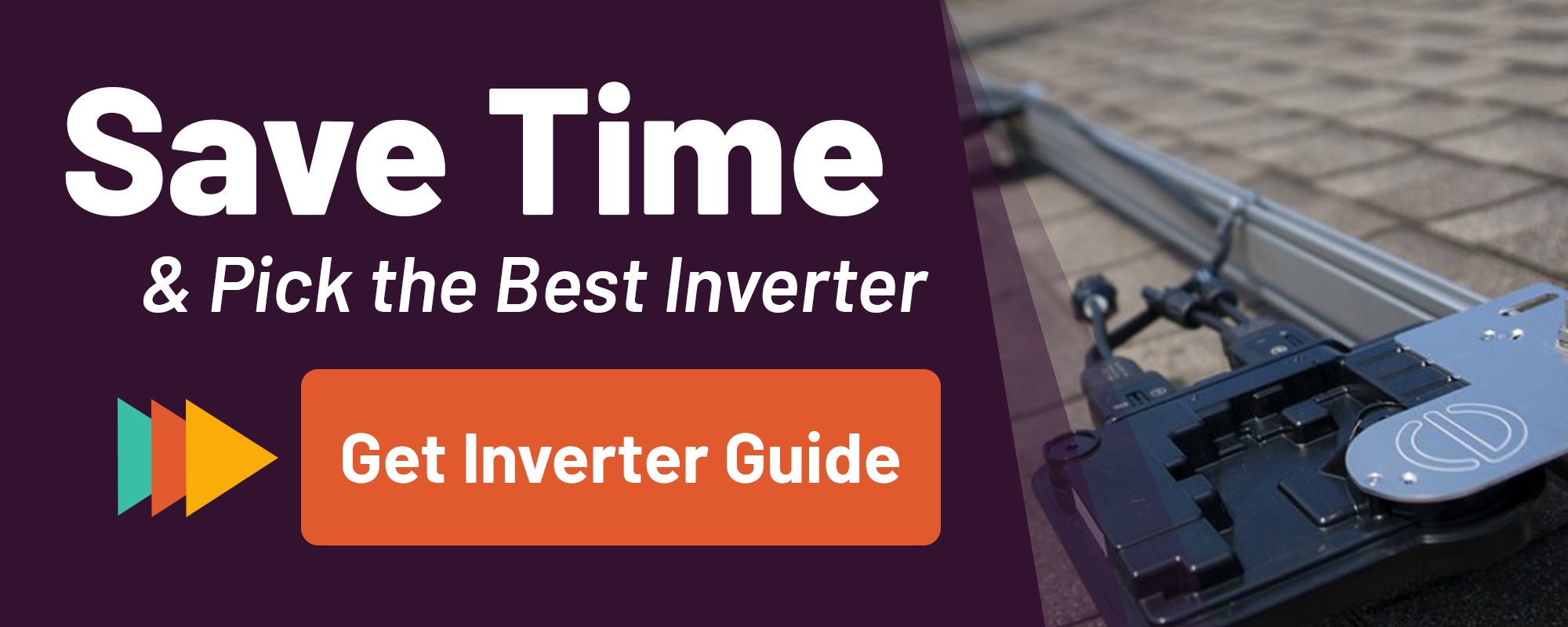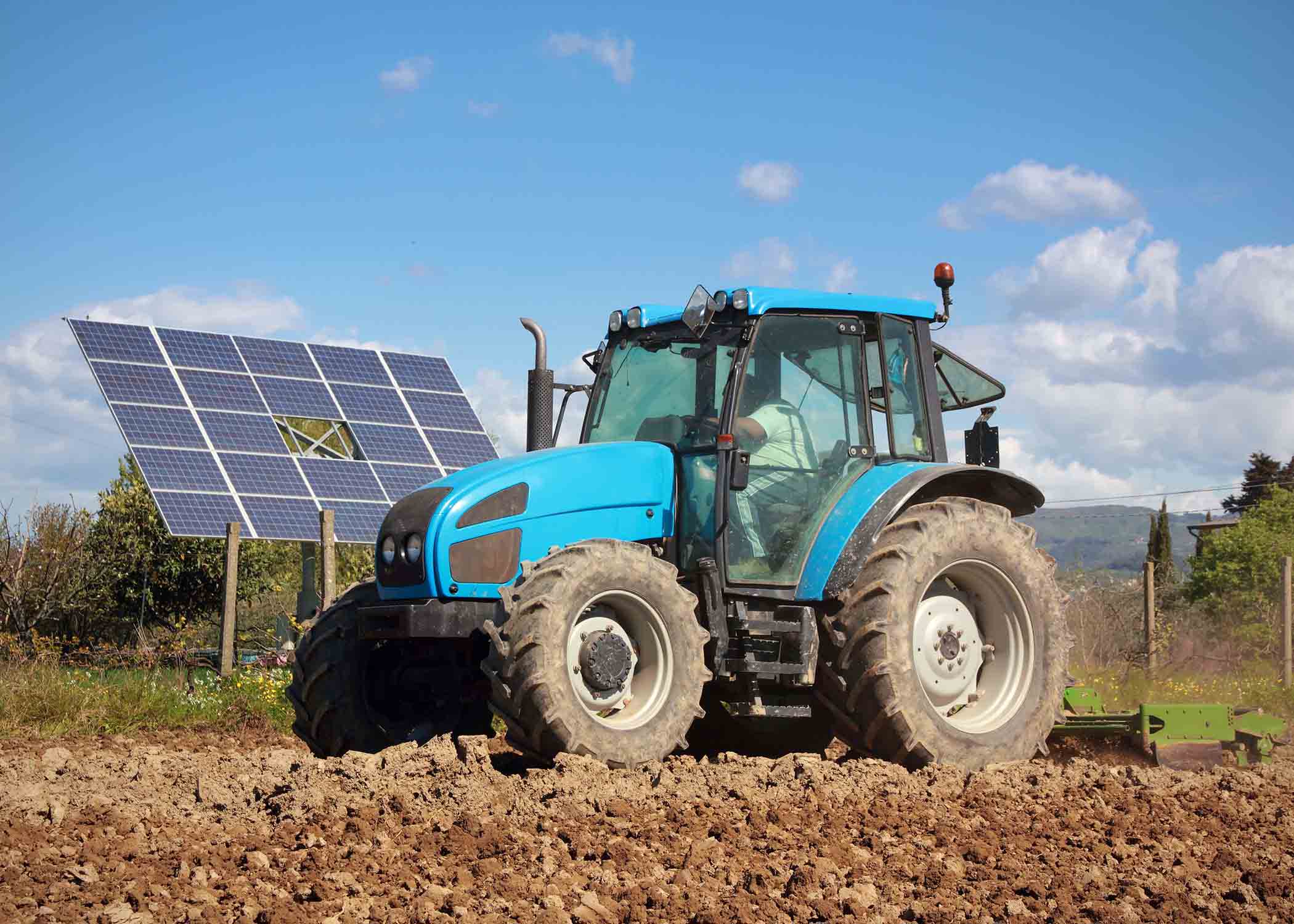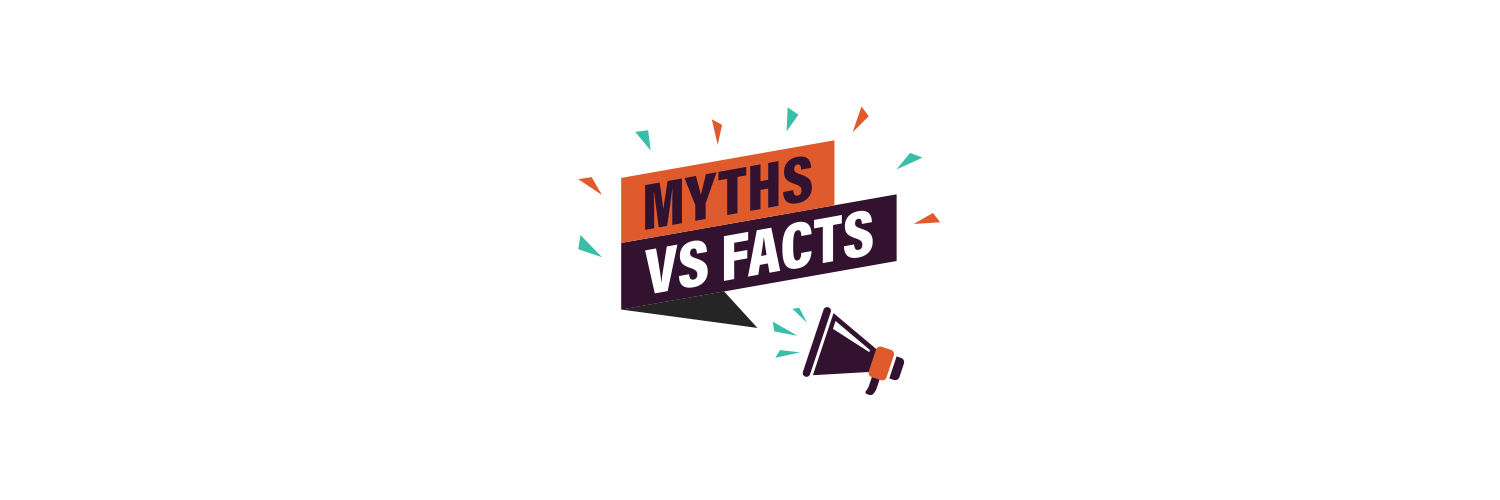If you are installing a solar panel system, selecting the right type of solar inverter will be a major decision in your investment. Inverters convert direct current (DC) energy generated by your solar panels into usable alternating current (AC) energy, essential equipment for solar powering.
Follow this guide to compare the types of solar inverters, the pros and cons, and ideal applications for each type of solar inverter to help you make the right choice for your solar installation. Also be sure to check out our solar inverter accessories once you decide on the best system for you.

What Is a Solar Inverter?
A solar inverter converts DC (direct current) into AC (
This article will break down the three main types of inverters used for solar: string inverters vs. micro-inverters vs. optimizers. Our goal is to provide an entry-level primer that compares pricing, pros and cons, and ideal applications for each type of solar inverter.
Solar Inverters: What Are the Differences?
Solar inverters are an essential part of any solar PV installation; understanding the difference can help you select the right converter and save you money. Choosing between micro inverter vs. string inverter, or power optimizer vs. micro-inverter can make a crucial difference, depending on your individual situation and size of your system. Here’s a breakdown of the different types of solar inverters to help you find the right solution for your solar installation.
What is a string inverter?
A string inverter is a central inverter with inputs for “strings” of panels to be run into a single unit. Panels are wired together in series, and the end of the chain plugs into the inverter. String inverters can feature multiple inputs.
For example, you might have three strings of eight panels each plugged into the three inputs on an SMA Sunny Boy 7700W string inverter. That would allow you to build a 24-panel system on a single inverter unit.

What is a micro-inverter?
A micro-inverter is an inverter that pairs with a single solar panel to manage the DC-to-AC power inversion for that individual panel. The difference between a micro-inverter vs. a central inverter is that in micro-inverter systems, there is no centralized inverter. Instead, each panel is hooked up to its own micro-inverter.

What is a power optimizer?
Optimizers can be attached to your solar panels, enabling you to control each panel’s output independently from the rest of the string. The difference between a power optimizer vs. a micro-inverter is that it solves the limitations of string inverters. If a single panel under-produces due to shade or malfunction, optimizers ensure the other panels in the string are not affected.

Pros and Cons: Micro Inverter vs. String Inverter vs. Optimizer
String inverters are generally the most common and affordable inverter option and function best if your roof has plenty of exposure to sunlight. Micro-inverters and power optimizers offer similar benefits but operate in different ways, best suited for roofs that have shading or are oriented in different directions.
If you are considering upgrading to a power optimizer or micro-inverter vs. string inverter, pay careful attention to the differences and what inverter makes sense for you, weighing the pros and cons.
Pros and Cons of String Inverters
Pros: String inverters are the most cost-effective option available. They are ideal for both residential and commercial properties without shading issues and can be paired with power optimizers.
Cons: You’ve probably heard the saying “a chain is only as strong as its weakest link.” That principle applies to panel strings. When one panel in the string suffers reduced output, every panel in the string drops to that reduced output.
For example, you may have 330W panels, but if a single panel in the string falls to 250W production, every panel in that string is going to produce 250W of power.
Here are some factors that can cause this drop in production:
- Shade. Your panel will produce less energy when it’s shaded, and shading on one panel will impact the entire string.
- Panel Facing. Panels produce the most energy when they face directly at the sun. In the US, panels should face south for optimal production. If you split a string of panels on your roof so that half face south and half face east, the south-facing panels will drop to the lower output of the panels that face to the east.
- Equipment Malfunction. If one of your panels stops working, your entire string stops working until you repair or replace the defective panel.
For these reasons, we only recommend using string inverters vs. micro-inverters or optimizers if your system will receive full sunlight year-round and all panels will face the same direction. This tends to work best when you have lots of space on your property and can build a fixed ground mount clear of any obstacles.
Assuming you meet these conditions, string inverters are a fantastic option to help you save some money on your solar project.

Pros and Cons of Micro-Inverters
Pros: Each panel and micro-inverter pairing is essentially a self-contained single-panel solar electric system:
- Panels can be built in any configuration or orientation, and micro-inverter systems can be as small or as large as you need them to be.
- Micro-inverters isolate the output of each individual panel and enable panel-level monitoring.
- You have the ability to start with a small-scale system that matches your budget, then expand down the road.
Let’s say you live in the average American household, which uses roughly 900 kilowatt-hours of electricity per month. What if you want to go solar, but only have the budget to offset a smaller portion of that usage upfront?
With an initial budget of $2,000, you could start with five Enphase IQ7+ micro-inverters paired with five Astronergy 335W panels. That would allow you to offset about 25% of that energy usage.
When choosing between a micro-inverter vs. central string inverter, keep in mind that you’ll start saving money immediately, since solar is cheaper than buying power from the utility, and you’ll be negating a portion of your bill. Later down the line, you can scale the system up to offset 100% of your household energy usage.
Cons: The trade-off for the convenience of using a micro-inverter vs. string inverter is that micro-inverters are the most expensive option on a cost-per-watt basis. Once you scale into larger-scale systems, string inverters (with or without optimizers) are more cost-effective than micro-inverter systems.
Once you eclipse a certain system size (say 6-8 full-sized panels), we typically recommend switching over to a string inverter design as it will be the most cost-effective option.
Pros and Cons of Power Optimizers
Pros: Choosing a power optimizer vs. a micro-inverter gives you much more flexibility with your system design:
- You can build your array in a partially shaded area or split strings across the usable space on your roof. Optimizers ensure you get the most production out of each panel in your system.
- Optimizers give you individual panel monitoring. You’ll be able to track the production from each individual panel, which can help you spot defects and shading issues on a panel-by-panel basis.
Cons: Of course, the trade-off is the additional functionality comes at a higher cost. A SolarEdge HD-Wave inverter with optimizers costs roughly twice as much per watt as the SMA Sunny Boy string inverter.
But you should keep in mind these cost-per-watt figures assume each panel is working at max efficiency. If you build a string inverter in a shaded location and don’t put optimizers on your panels, your system will never produce at its rated output.
What Are the Best Solar Inverters
If you want to maximize your solar system’s output, your solar inverter choice between string inverters vs. micro-inverters vs. optimizers will be as important as the solar panels. We recommend the following options:
Best String Inverters
We like the SMA Sunny Boy line. There are a number of sizes available for residential projects:
One nice feature unique to the Sunny Boy is the Secure Power Supply (SPS), a plug which can output 2000W of emergency power in case of grid outages. The SPS functionality is limited to times when the sun is still shining (as it still draws power from your panels, merely bypassing the grid interconnection). But it’s still a nice backup plan in a pinch.
The SMA can also be retrofitted with optimizers to mitigate production drop (more on this in the next section). However, adding optimizers comes with the trade-off of losing the SPS functionality.
Read more about the Sunny Boy in our review of the best grid-tied solar inverters on the market.
Best Micro-Inverters
Our go-to pick is the Enphase IQ7+ micro-inverter. It’s a 290W micro-inverter that is configured to work with either 60-cell or 72-cell panels (the two most common panel configurations). The 25-year warranty on the IQ7+ matches the industry-standard 25-year warranty on solar panels, so they’ll likely last for the entire life of your system.
Read more about the IQ7+ in our review of the best grid-tied solar inverters on the market.
Best Power Optimizer
Our preferred pick is the SolarEdge HD-Wave series, with the HD-Wave 7.6 kW model being our best-seller. The standard line features a broad range of options from 3.8 kW to 11.4 kW for residential systems, so you can scale the inverter to the size of your system.
The HD-Wave is small and lightweight, making it easier to install than other options in this category. It also boasts an industry-best 99% CEC weighted efficiency rating, so almost no power that flows through the system is wasted.
Read more about the HD-Wave in our review of the best grid-tied solar inverters on the market.
How Do I Pick the Best Inverter For My System?
Your choice between micro inverter vs string inverter vs. power optimizer will likely be dictated by the constraints of your project. Pick a string inverter if you can build your system in full sunlight or use micro-inverters if you need to start small and expand later. In most other scenarios, a string inverter with power optimizers with the right inverter accessories is going to be your best bet to strike the right balance between price and efficiency.
For more information, grab our free solar inverter guide or contact us at 1-800-472-1142 to consult with our experienced solar design techs.





